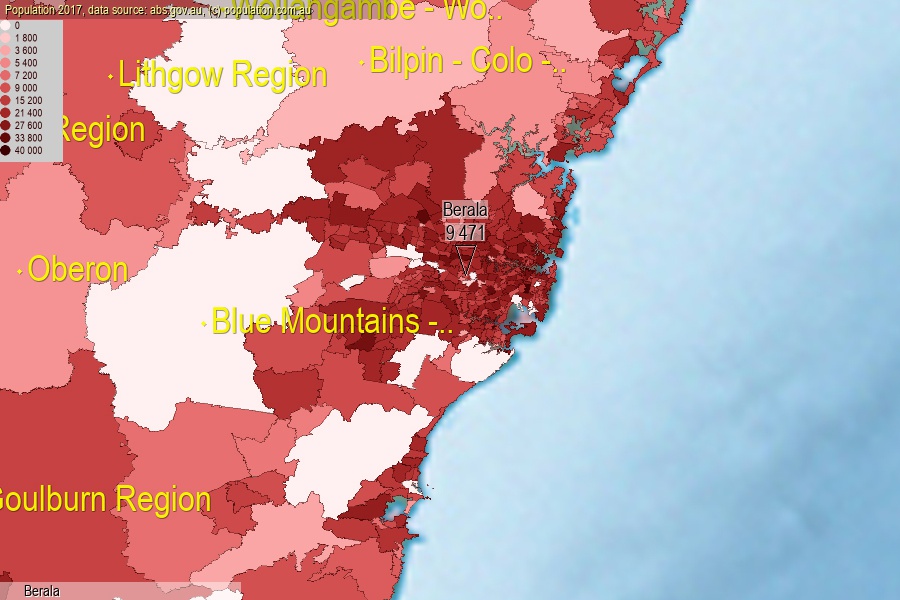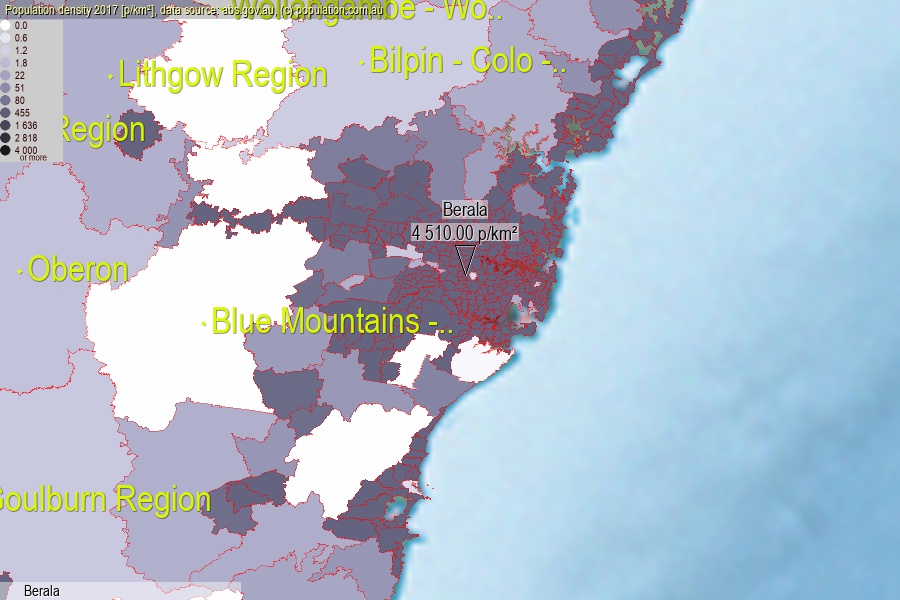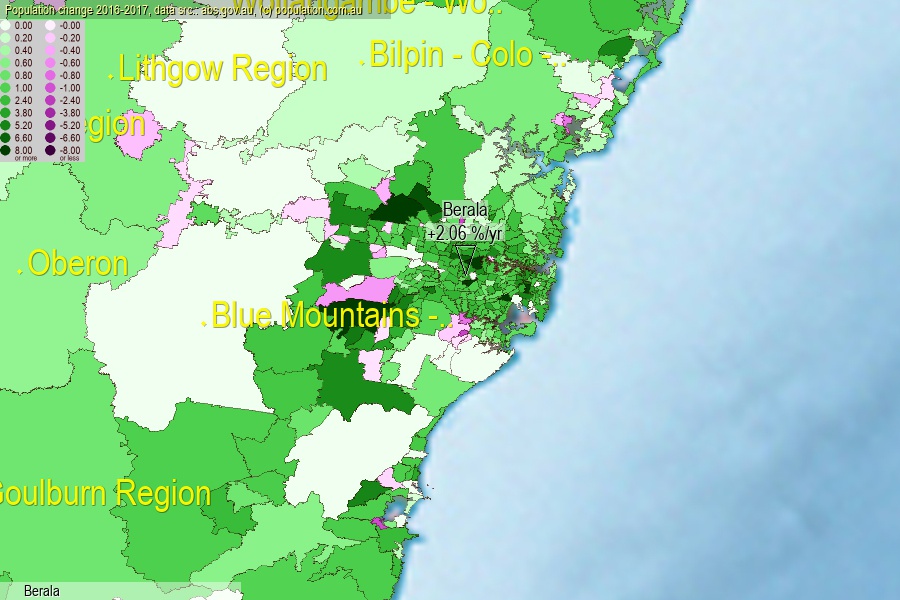 population.com.au
population.com.auLast official estimated population of Berala (as Statistical Area Level 2) was 9 471 people (on 2017-06-30)[2]. This was 0.04% of total Australian population and 0.119% of NSW population. Area of Berala is 2.10 km², in this year population density was 4 510.00 p/km² . If population growth rate would be same as in period 2016-2017 (+2.06%/yr), Berala population in 2025 would be 11 148. [0]



Click to enlarge. Berala is located in the center of the images.
Population [people], population density [p./km²] and population change [%/year] [2]
View borders » (new window) [4]
[2001-2002] +0.25 %/Yr.
[2002-2003] -2.00 %/Yr.
[2003-2004] +0.94 %/Yr.
[2004-2005] +2.57 %/Yr.
[2005-2006] -0.41 %/Yr.
[2006-2007] +1.54 %/Yr.
[2007-2008] +2.32 %/Yr.
[2008-2009] +2.69 %/Yr.
[2009-2010] +2.61 %/Yr.
[2010-2011] +0.93 %/Yr.
[2011-2012] +0.54 %/Yr.
[2012-2013] +0.60 %/Yr.
[2013-2014] +0.58 %/Yr.
[2014-2015] +1.15 %/Yr.
[2015-2016] +1.55 %/Yr.
[2016-2017] +2.06 %/Yr.
[0] Calculated with linear interpolation from officially estimated population
[1] Read more about SA2 and Australian Statistical Geography Standard (ASGS) on abs.gov.au
[2] Population data from Australian Bureau of Statistics (Population and density: 2017; change: 2016-2017)
[3] Digital Boundaries: Australian Statistical Geography Standard (ASGS) 2016.
[4] Border coordinates are simplifyed using Ramer-Douglas-Peucker algorithm.